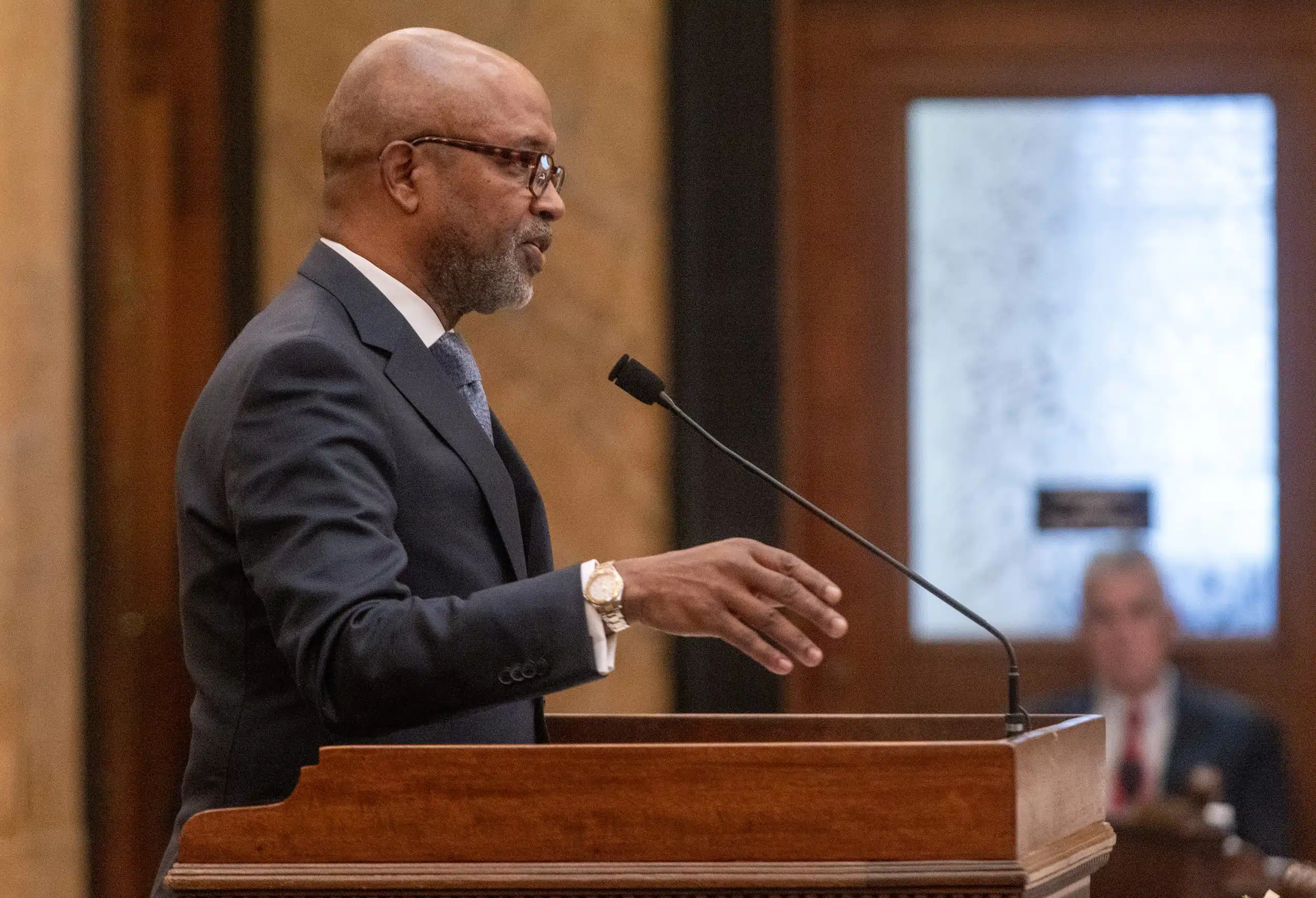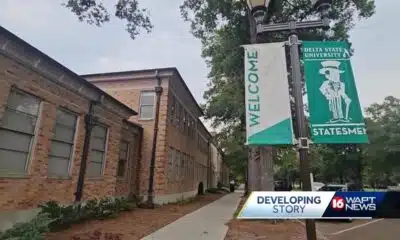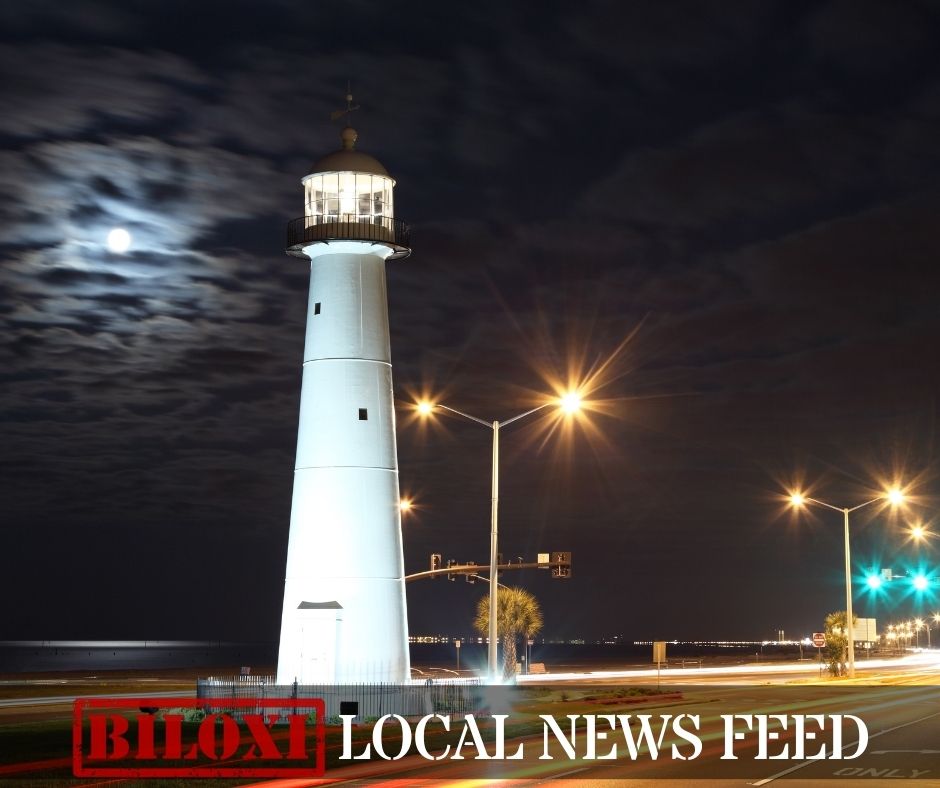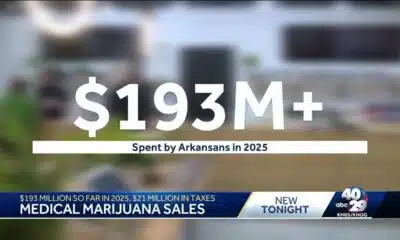Mississippi Today
Transcript: Rep. Robert Johnson gives Democratic response to 2024 State of the State address

Rep. Robert Johnson III, the Democratic leader of the House of Representatives, delivered a response to Gov. Tate Reeves’ annual State of the State address on Feb. 26, 2024.
Below is the transcript of Johnson’s response, which aired on Mississippi Public Broadcasting following Reeves’ speech.
Editor’s note: This transcript was submitted by Johnson’s staff and has not been edited or formatted to match Mississippi Today’s style.
Good Evening, I’m Rep. Robert Johnson, Democratic Leader in the Mississippi House of Representatives.
At his inauguration, Gov. Reeves kicked off his second term with a speech centered on how he’d strive to be a governor for “all Mississippi.” He told us that there is “no black Mississippi or white Mississippi. There is no red Mississippi or blue Mississippi,” while he outlined a vision for his second term that, frankly, belied his entire career in public office.
But after a contentious election cycle, and with Mississippi’s big problems not going anywhere – and many getting worse – it was a welcome message. Since then, however, we’ve watched the governor go right back to what we’ve come to expect from him – red-meat rhetoric and a refusal to confront the very real problems facing our state.
Tonight you heard from a governor who only wants you to hear one side of the story. Because for every economic development project the governor celebrates, our employment rate remains stagnant.
For every corporate handout we dole out for one of those projects, our schools remain underfunded by billions of dollars.
And for every politically-motivated “plan” to address the hospital crisis, hundreds of thousands of working Mississippians are still without access to healthcare.
A real leader doesn’t see telling the full story as a problem, because a real leader knows being honest isn’t a weakness; it’s a necessity. Embracing the complexities of a situation, engaging in earnest debate, collaborating with experts and advocates – that’s what a leader does. Simply saying “no” isn’t policymaking. Deflection and distraction isn’t leadership.
Leadership looks like what Gov. Reeves claimed he was working toward in his inaugural address. But unfortunately, you can’t just say you’re a governor for all Mississippi. You have to show it. And Gov. Reeves’ actions speak much louder than his words.
In the six weeks since the governor proclaimed that “everything we do, we do together,” he has quickly returned to his conservative buzzword approach to governance, saying whatever it takes to get him booked consistently on Fox News.
He’s blocked nearly $40 million in federal funds to feed more than 300,000 hungry Mississippi children during the summer and help their struggling families.
And he has continued to downplay the severity of the healthcare crisis – ignoring the long-term damage our large uninsured population will have on an already strained healthcare system – even as his own party moves to address that problem without him.
I’m proud that House Democrats have continued to lead on addressing the healthcare crisis. Mississippi’s healthcare landscape has been decimated by refusing to implement expansion in a timely fashion, and with an eye toward improving health outcomes in a cost-effective way, we’ve developed a pragmatic, practical, and easily implemented plan to get this conversation off the ground.
Our plan, HB 1146, would insure Mississippians up to 200% of the federal poverty level – those are individuals making roughly $30,000 a year. Traditional Medicaid expansion would only insure individuals who are at or below 138% of the federal poverty level.
This hybrid plan – a 50/50 combination of traditional Medicaid expansion with private options and premium assistance – will provide insurance coverage to the people that need it most, make insurance coverage more affordable for working families, and would help address the myriad issues facing the healthcare system in our state.
By expanding the number of individuals covered, our plan will improve access to care in a way that traditional Medicaid expansion on its own could not. Greater access to care leads to better management of chronic conditions, and the prevention of chronic disease. A healthier population will have increasingly positive long-term impacts on the affordability of healthcare across the board, and on the overall strength of our state’s healthcare system.
Mississippi’s struggling healthcare workforce will also benefit from insuring more individuals. We’re facing a dangerous provider shortage, and as a result of financial returns that hospitals and providers will receive due to expanding Medicaid, we’ll see improved physician retention.
Physicians, especially primary care providers and general internists, are more likely to locate themselves or stay in a state that has expanded Medicaid.
For Mississippians who are uninsured, or who have a job but don’t have insurance through that job, they will be put on an individual qualified health plan and have the majority of their total costs subsidized to make it more affordable.
And for people who are working and have employer health insurance coverage, the state would subsidize their premiums and most of the cost sharing requirements for them. This will both make health insurance more affordable, and incentivize small businesses to offer a group health insurance plan.
Across the country, the Affordable Care Act has helped stabilize health costs for many small businesses that provide coverage, with the rate of small-business premium increases falling by half after implementation of the law.
And since 2010, the increase in small-business healthcare premiums has been at their lowest level in years, following regular double-digit increases prior to the law’s enactment.
Small businesses are the backbone of our state’s economy. And without a healthy workforce, our local economies suffer. We literally cannot afford to keep kicking the can down the road.
We’re glad to see that all of us working toward a solution in the Capitol aren’t being held back by a governor who is more interested in dismissing our effort to come up with a solution, than to offer up an alternative solution himself.
Year after year, House and Senate Democrats have offered up concrete ideas and common-sense solutions to move Mississippi forward. We’ve authored legislation to address the increasingly dangerous healthcare crisis, raise the minimum wage, fix our state’s crumbling infrastructure, fully fund public education, make voting easier and more convenient, and increase transparency in government.
We have consistently led the charge on increasing teacher pay and a raise for state employees — and not just when it was politically beneficial to do so.
We’ve also sounded the alarm on ensuring equity in economic development, so that all corners of our state have the opportunity to flourish. And now, as the governor touts these so-called major economic development projects, and celebrates it being “Mississippi’s time,” it’s hard not to look around at the areas west of I-55 – where the bulk of Mississippi’s Black population resides – and say “for who, governor?”
Mississippi has the lowest per capita income in the country. We have the highest rate of poverty in the country – nearly 20%. And both of those statistics are doubled or disproportionately worse in the Mississippi Delta and southwest Mississippi. Those numbers simply don’t improve without intentional, equitable economic development.
So if the issue is an educated workforce, then fund our schools. If the issue is infrastructure, then put more money into our chronically underfunded roads and bridges. If you can spend millions of dollars on site readiness east of I-55, then why can’t you spend millions readying sites west of I-55?
Refusing to prioritize equitable economic development is a choice. And the people of this state deserve to know why they have a governor who seems perfectly happy to let a significant number of his constituents flail while others continue to flourish.
During last year’s State of the State and in every public appearance he made on the campaign trail, the governor has told us that “Mississippi continues to be in the best financial shape in its history.”
And yet, 30% of Mississippi children are living in poverty. One in six women of childbearing age is uninsured. State employees – the men and women who keep our state running – are, on average, paid thousands of dollars less than their counterparts in all of our surrounding states.
Our long-neglected roadways continue to cost Mississippians, on average, $800 in vehicle damage annually.
When you’re driving to your child’s baseball tournament in Vicksburg or you’re on your way to the Coast for a long weekend — can you honestly say that what you see as you’re looking out the window makes you stop and think “Yes. This is a state in the best financial shape it’s ever been in. This is a state that is trying to keep our best and brightest. This is a state that is working for everyone who’s trying their best to make a life here?”
So, I’m asking you: Is your life any different than it was this time last year? Are you wealthier? Are you healthier?
The governor will tell you that “when it comes to delivering a quality education for our children, we are getting the job done”; but we know there are classrooms that don’t have pencils and chalk, or a full set of textbooks.
He’ll tell you that “Mississippi is the safest place for the unborn”; but we know that Mississippi babies are more likely to die before their first birthday than anywhere else in the country.
He’ll tell you “it’s the strongest our economy has ever been”; and we ask “for who?” Who are you going to believe, Mississippi? The governor or your lying eyes?
It’s one thing to have different approaches to solving our state’s problems. It is quite another to refuse to acknowledge your citizens’ concerns and ignore many of Mississippi’s issues outright – all while telling us over and over again just how great everything is.
Mississippians share more values and principles than not. We care about what happens to our neighbors because that’s just who we are. We want our families to prosper and for our children to have a better future and more opportunities than we did.
Our state is in desperate need of a leader who sees all of that and governs based on it.
We deserve a governor who has respect for his fellow Mississippian, someone who will lead with honesty and empathy and compassion, and who can make the best decisions for everyone, not just a select few. We deserve a leader who will not only hear people, but listen to them.
It’s up to us to demand better. Things won’t get better in this state if we continue to let the governor — or any other elected leader — get away with lip service. It’s not enough to just say you’re a governor for all Mississippi. You need to show us what that looks like in practice.
We’re a better place when we work together and overcome our differences for the good of the people we represent. We need leaders who bring people together, who acknowledge the problems we face and try to understand the causes of those problems alongside the people most affected.
That’s what leadership looks like. That’s what Mississippi needs from its governor.
This article first appeared on Mississippi Today and is republished here under a Creative Commons license.
Mississippi Today
Mississippi prepares for another execution
The Mississippi Supreme Court has set the execution of a man who kidnapped and murdered a 20-year-old community college student in north Mississippi 30 years ago.
Charles Ray Crawford, 59, is set to be executed Oct. 15 at the Mississippi State Penitentiary at Parchman, after multiple requests by the attorney general’s office.
Eight justices joined the majority opinion to set the execution, concluding that Crawford has exhausted all state and federal legal remedies. Mississippi Supreme Court Justice T. Kenneth Griffis Jr. wrote the Friday opinion. Justice David Sullivan did not participate.
However, Kristy Noble with the Mississippi Office of Capital Post-Conviction Counsel released a statement saying it will file another appeal with the U.S. Supreme Court.
“”Mr. Crawford’s inexperienced trial counsel conceded his guilt to the jury — against Mr.
Crawford’s timely and repeated objections,” Noble said in the statement. “Mr. Crawford told his counsel to pursue a not guilty verdict. Counsel did just the opposite, which is precisely what the U.S. Supreme Court says counsel cannot do,” Noble said in the statement.
“A trial like Mr. Crawford’s – one where counsel concedes guilt over his client’s express wishes – is essentially no trial at all.”
Last fall, Crawford’s attorneys asked the court not to set an execution date because he hadn’t exhausted appeal efforts in federal court to challenge a rape conviction that is not tied to his death sentence. In June, the U.S. Supreme Court declined to take up Crawford’s case.
A similar delay occurred a decade ago, when the AG’s office asked the court to reset Crawford’s execution date, but that was denied because efforts to appeal his unrelated rape conviction were still pending.
After each unsuccessful filing, the attorney general’s office asked the Mississippi Supreme Court to set Crawford’s execution date.
On Friday, the court also denied Crawford’s third petition for post-conviction relief and a request for oral argument. It accepted the state’s motion to dismiss the petition. Seven justices concurred and Justice Leslie King concurred in result only. Again, Justice Sullivan did not participate.
Crawford was convicted and sentenced to death in Lafayette County for the 1993 rape and murder of North Mississippi Community College student Kristy Ray.
Days before he was set to go to trial on separate aggravated assault and rape charges, he kidnapped Ray from her parents’ Tippah County home, leaving ransom notes. Crawford took Ray to an abandoned barn where he stabbed her, and his DNA was found on her, indicating he sexually assaulted her, according to court records.
Crawford told police he had blackouts and only remembered parts of the crime, but not killing Ray. Later he admitted “he must of killed her” and led police to Ray’s body, according to court records.
At his 1994 trial he presented an insanity defense, including that he suffered from psychogenic amnesia – periods of time lapse without memory. Medical experts who provided rebuttal testimony said Crawford didn’t have psychogenic amnesia and didn’t show evidence of bipolar illness.
The last person executed in Mississippi was Richard Jordan in June, previously the state’s oldest and longest serving person on death row.
There are 36 people on death row, according to records from the Mississippi Department of Corrections.
Update 9/15/25: This story has been updated to include a response from the Mississippi Office of Capital Post-Conviction Counsel
This article first appeared on Mississippi Today and is republished here under a Creative Commons Attribution-NoDerivatives 4.0 International License.
The post Mississippi prepares for another execution appeared first on mississippitoday.org
Note: The following A.I. based commentary is not part of the original article, reproduced above, but is offered in the hopes that it will promote greater media literacy and critical thinking, by making any potential bias more visible to the reader –Staff Editor.
Political Bias Rating: Centrist
The article presents a factual and balanced account of the legal proceedings surrounding a scheduled execution in Mississippi. It includes perspectives from both the state’s attorney general’s office and the defense counsel, without using emotionally charged language or advocating for a particular political stance. The focus on legal details and court decisions reflects a neutral, informative approach typical of centrist reporting.
Mississippi Today
Presidents are taking longer to declare major natural disasters. For some, the wait is agonizing
TYLERTOWN — As an ominous storm approached Buddy Anthony’s one-story brick home, he took shelter in his new Ford F-250 pickup parked under a nearby carport.
Seconds later, a tornado tore apart Anthony’s home and damaged the truck while lifting it partly in the air. Anthony emerged unhurt. But he had to replace his vehicle with a used truck that became his home while waiting for President Donald Trump to issue a major disaster declaration so that federal money would be freed for individuals reeling from loss. That took weeks.
“You wake up in the truck and look out the windshield and see nothing. That’s hard. That’s hard to swallow,” Anthony said.
Disaster survivors are having to wait longer to get aid from the federal government, according to a new Associated Press analysis of decades of data. On average, it took less than two weeks for a governor’s request for a presidential disaster declaration to be granted in the 1990s and early 2000s. That rose to about three weeks during the past decade under presidents from both major parties. It’s taking more than a month, on average, during Trump’s current term, the AP found.
The delays mean individuals must wait to receive federal aid for daily living expenses, temporary lodging and home repairs. Delays in disaster declarations also can hamper recovery efforts by local officials uncertain whether they will receive federal reimbursement for cleaning up debris and rebuilding infrastructure. The AP collaborated with Mississippi Today and Mississippi Free Press on the effects of these delays for this report.
“The message that I get in the delay, particularly for the individual assistance, is that the federal government has turned its back on its own people,” said Bob Griffin, dean of the College of Emergency Preparedness, Homeland Security and Cybersecurity at the University at Albany in New York. “It’s a fundamental shift in the position of this country.”
The wait for disaster aid has grown as Trump remakes government
The Federal Emergency Management Agency often consults immediately with communities to coordinate their initial disaster response. But direct payments to individuals, nonprofits and local governments must wait for a major disaster declaration from the president, who first must receive a request from a state, territory or tribe. Major disaster declarations are intended only for the most damaging events that are beyond the resources of states and local governments.
Trump has approved more than two dozen major disaster declarations since taking office in January, with an average wait of almost 34 days after a request. That ranged from a one-day turnaround after July’s deadly flash flooding in Texas to a 67-day wait after a request for aid because of a Michigan ice storm. The average wait is up from a 24-day delay during his first term and is nearly four times as long as the average for former Republican President George H.W. Bush, whose term from 1989-1993 coincided with the implementation of a new federal law setting parameters for disaster determinations.
The delays have grown over time, regardless of the party in power. Former Democratic President Joe Biden, in his last year in office, averaged 26 days to declare major disasters — longer than any year under former Democratic President Barack Obama.

FEMA did not respond to the AP’s questions about what factors are contributing to the trend.
Others familiar with FEMA noted that its process for assessing and documenting natural disasters has become more complex over time. Disasters have also become more frequent and intense because of climate change, which is mostly caused by the burning of fuels such as gas, coal and oil.
The wait for disaster declarations has spiked as Trump’s administration undertakes an ambitious makeover of the federal government that has shed thousands of workers and reexamined the role of FEMA. A recently published letter from current and former FEMA employees warned the cuts could become debilitating if faced with a large-enough disaster. The letter also lamented that the Trump administration has stopped maintaining or removed long-term planning tools focused on extreme weather and disasters.
Shortly after taking office, Trump floated the idea of “getting rid” of FEMA, asserting: “It’s very bureaucratic, and it’s very slow.”
FEMA’s acting chief suggested more recently that states should shoulder more responsibility for disaster recovery, though FEMA thus far has continued to cover three-fourths of the costs of public assistance to local governments, as required under federal law. FEMA pays the full cost of its individual assistance.
Former FEMA Administrator Pete Gaynor, who served during Trump’s first term, said the delay in issuing major disaster declarations likely is related to a renewed focus on making sure the federal government isn’t paying for things state and local governments could handle.
“I think they’re probably giving those requests more scrutiny,” Gaynor said. “And I think it’s probably the right thing to do, because I think the (disaster) declaration process has become the ‘easy button’ for states.”
The Associated Press on Monday received a statement from White House spokeswoman Abigail Jackson in response to a question about why it is taking longer to issue major natural disaster declarations:
“President Trump provides a more thorough review of disaster declaration requests than any Administration has before him. Gone are the days of rubber stamping FEMA recommendations – that’s not a bug, that’s a feature. Under prior Administrations, FEMA’s outsized role created a bloated bureaucracy that disincentivized state investment in their own resilience. President Trump is committed to right-sizing the Federal government while empowering state and local governments by enabling them to better understand, plan for, and ultimately address the needs of their citizens. The Trump Administration has expeditiously provided assistance to disasters while ensuring taxpayer dollars are spent wisely to supplement state actions, not replace them.”

In Mississippi, frustration festered during wait for aid
The tornado that struck Anthony’s home in rural Tylertown on March 15 packed winds up to 140 mph. It was part of a powerful system that wrecked homes, businesses and lives across multiple states.
Mississippi’s governor requested a federal disaster declaration on April 1. Trump granted that request 50 days later, on May 21, while approving aid for both individuals and public entities.
On that same day, Trump also approved eight other major disaster declarations for storms, floods or fires in seven other states. In most cases, more than a month had passed since the request and about two months since the date of those disasters.
If a presidential declaration and federal money had come sooner, Anthony said he wouldn’t have needed to spend weeks sleeping in a truck before he could afford to rent the trailer where he is now living. His house was uninsured, Anthony said, and FEMA eventually gave him $30,000.
In nearby Jayess in Lawrence County, Dana Grimes had insurance but not enough to cover the full value of her damaged home. After the eventual federal declaration, Grimes said FEMA provided about $750 for emergency expenses, but she is now waiting for the agency to determine whether she can receive more.

“We couldn’t figure out why the president took so long to help people in this country,” Grimes said. “I just want to tie up strings and move on. But FEMA — I’m still fooling with FEMA.”
Jonathan Young said he gave up on applying for FEMA aid after the Tylertown tornado killed his 7-year-old son and destroyed their home. The process seemed too difficult, and federal officials wanted paperwork he didn’t have, Young said. He made ends meet by working for those cleaning up from the storm.
“It’s a therapy for me,” Young said, “to pick up the debris that took my son away from me.”
Historically, presidential disaster declarations containing individual assistance have been approved more quickly than those providing assistance only to public entities, according to the AP’s analysis. That remains the case under Trump, though declarations for both types are taking longer.
About half the major disaster declarations approved by Trump this year have included individual assistance.
Some people whose homes are damaged turn to shelters hosted by churches or local nonprofit organizations in the initial chaotic days after a disaster. Others stay with friends or family or go to a hotel, if they can afford it.
But some insist on staying in damaged homes, even if they are unsafe, said Chris Smith, who administered FEMA’s individual assistance division under three presidents from 2015-2022. If homes aren’t repaired properly, mold can grow, compounding the recovery challenges.

That’s why it’s critical for FEMA’s individual assistance to get approved quickly — ideally, within two weeks of a disaster, said Smith, who’s now a disaster consultant for governments and companies.
“You want to keep the people where they are living. You want to ensure those communities are going to continue to be viable and recover,” Smith said. “And the earlier that individual assistance can be delivered … the earlier recovery can start.”
In the periods waiting for declarations, the pressure falls on local officials and volunteers to care for victims and distribute supplies.
In Walthall County, where Tylertown is, insurance agent Les Lampton remembered watching the weather news as the first tornado missed his house by just an eighth of a mile. Lampton, who moonlights as a volunteer firefighter, navigated the collapsed trees in his yard and jumped into action. About 45 minutes later, the second tornado hit just a mile away.
“It was just chaos from there on out,” Lampton said.
Walthall County, with a population of about 14,000, hasn’t had a working tornado siren in about 30 years, Lampton said. He added there isn’t a public safe room in the area, although a lot of residents have ones in their home.
Rural areas with limited resources are hit hard by delays in receiving funds through FEMA’s public assistance program, which, unlike individual assistance, only reimburses local entities after their bills are paid. Long waits can stoke uncertainty and lead cost-conscious local officials to pause or scale-back their recovery efforts.

In Walthall County, officials initially spent about $700,000 cleaning up debris, then suspended the cleanup for more than a month because they couldn’t afford to spend more without assurance they would receive federal reimbursement, said county emergency manager Royce McKee. Meanwhile, rubble from splintered trees and shattered homes remained piled along the roadside, creating unsafe obstacles for motorists and habitat for snakes and rodents.
When it received the federal declaration, Walthall County took out a multimillion-dollar loan to pay contractors to resume the cleanup.
“We’re going to pay interest and pay that money back until FEMA pays us,” said Byran Martin, an elected county supervisor. “We’re hopeful that we’ll get some money by the first of the year, but people are telling us that it could be [longer].”
Lampton, who took after his father when he joined the volunteer firefighters 40 years ago, lauded the support of outside groups such as Cajun Navy, Eight Days of Hope, Samaritan’s Purse and others. That’s not to mention the neighbors who brought their own skid steers and power saws to help clear trees and other debris, he added.
“That’s the only thing that got us through this storm, neighbors helping neighbors,” Lampton said. “If we waited on the government, we were going to be in bad shape.”
Lieb reported from Jefferson City, Missouri, and Wildeman from Hartford, Connecticut.
Update 98/25: This story has been updated to include a White House statement released after publication.
This article first appeared on Mississippi Today and is republished here under a Creative Commons Attribution-NoDerivatives 4.0 International License.
The post Presidents are taking longer to declare major natural disasters. For some, the wait is agonizing appeared first on mississippitoday.org
Note: The following A.I. based commentary is not part of the original article, reproduced above, but is offered in the hopes that it will promote greater media literacy and critical thinking, by making any potential bias more visible to the reader –Staff Editor.
Political Bias Rating: Center-Left
This article presents a critical view of the Trump administration’s handling of disaster declarations, highlighting delays and their negative impacts on affected individuals and communities. It emphasizes concerns about government downsizing and reduced federal support, themes often associated with center-left perspectives that favor robust government intervention and social safety nets. However, it also includes statements from Trump administration officials defending their approach, providing some balance. Overall, the tone and framing lean slightly left of center without being overtly partisan.
Mississippi Today
Northeast Mississippi speaker and worm farmer played key role in Coast recovery after Hurricane Katrina
The 20th anniversary of Hurricane Katrina slamming the Mississippi Gulf Coast has come and gone, rightfully garnering considerable media attention.
But still undercovered in the 20th anniversary saga of the storm that made landfall on Aug. 29, 2005, and caused unprecedented destruction is the role that a worm farmer from northeast Mississippi played in helping to revitalize the Coast.
House Speaker Billy McCoy, who died in 2019, was a worm farmer from the Prentiss, not Alcorn County, side of Rienzi — about as far away from the Gulf Coast as one could be in Mississippi.
McCoy grew other crops, but a staple of his operations was worm farming.
Early after the storm, the House speaker made a point of touring the Coast and visiting as many of the House members who lived on the Coast as he could to check on them.
But it was his action in the forum he loved the most — the Mississippi House — that is credited with being key to the Coast’s recovery.
Gov. Haley Barbour had called a special session about a month after the storm to take up multiple issues related to Katrina and the Gulf Coast’s survival and revitalization. The issue that received the most attention was Barbour’s proposal to remove the requirement that the casinos on the Coast be floating in the Mississippi Sound.
Katrina wreaked havoc on the floating casinos, and many operators said they would not rebuild if their casinos had to be in the Gulf waters. That was a crucial issue since the casinos were a major economic engine on the Coast, employing an estimated 30,000 in direct and indirect jobs.
It is difficult to fathom now the controversy surrounding Barbour’s proposal to allow the casinos to locate on land next to the water. Mississippi’s casino industry that was birthed with the early 1990s legislation was still new and controversial.
Various religious groups and others had continued to fight and oppose the casino industry and had made opposition to the expansion of gambling a priority.
Opposition to casinos and expansion of casinos was believed to be especially strong in rural areas, like those found in McCoy’s beloved northeast Mississippi. It was many of those rural areas that were the homes to rural white Democrats — now all but extinct in the Legislature but at the time still a force in the House.
So, voting in favor of casino expansion had the potential of being costly for what was McCoy’s base of power: the rural white Democrats.
Couple that with the fact that the Democratic-controlled House had been at odds with the Republican Barbour on multiple issues ranging from education funding to health care since Barbour was inaugurated in January 2004.
Barbour set records for the number of special sessions called by the governor. Those special sessions often were called to try to force the Democratic-controlled House to pass legislation it killed during the regular session.
The September 2005 special session was Barbour’s fifth of the year. For context, current Gov. Tate Reeves has called four in his nearly six years as governor.
There was little reason to expect McCoy to do Barbour’s bidding and lead the effort in the Legislature to pass his most controversial proposal: expanding casino gambling.
But when Barbour ally Lt. Gov. Amy Tuck, who presided over the Senate, refused to take up the controversial bill, Barbour was forced to turn to McCoy.
The former governor wrote about the circumstances in an essay he penned on the 20th anniversary of Hurricane Katrina for Mississippi Today Ideas.
“The Senate leadership, all Republicans, did not want to go first in passing the onshore casino law,” Barbour wrote. “So, I had to ask Speaker McCoy to allow it to come to the House floor and pass. He realized he should put the Coast and the state’s interests first. He did so, and the bill passed 61-53, with McCoy voting no.
“I will always admire Speaker McCoy, often my nemesis, for his integrity in putting the state first.”
Incidentally, former Rep. Bill Miles of Fulton, also in northeast Mississippi, was tasked by McCoy with counting, not whipping votes, to see if there was enough support in the House to pass the proposal. Not soon before the key vote, Miles said years later, he went to McCoy and told him there were more than enough votes to pass the legislation so he was voting no and broached the idea of the speaker also voting no.
It is likely that McCoy would have voted for the bill if his vote was needed.
Despite his no vote, the Biloxi Sun Herald newspaper ran a large photo of McCoy and hailed the Rienzi worm farmer as a hero for the Mississippi Gulf Coast.
This article first appeared on Mississippi Today and is republished here under a Creative Commons Attribution-NoDerivatives 4.0 International License.
The post Northeast Mississippi speaker and worm farmer played key role in Coast recovery after Hurricane Katrina appeared first on mississippitoday.org
Note: The following A.I. based commentary is not part of the original article, reproduced above, but is offered in the hopes that it will promote greater media literacy and critical thinking, by making any potential bias more visible to the reader –Staff Editor.
Political Bias Rating: Centrist
The article presents a factual and balanced account of the political dynamics surrounding Hurricane Katrina recovery efforts in Mississippi, focusing on bipartisan cooperation between Democratic and Republican leaders. It highlights the complexities of legislative decisions without overtly favoring one party or ideology, reflecting a neutral and informative tone typical of centrist reporting.
-
News from the South - Kentucky News Feed7 days ago
Lexington man accused of carjacking, firing gun during police chase faces federal firearm charge
-
News from the South - Alabama News Feed7 days ago
Zaxby's Player of the Week: Dylan Jackson, Vigor WR
-
News from the South - Arkansas News Feed7 days ago
Arkansas medical marijuana sales on pace for record year
-
News from the South - North Carolina News Feed5 days ago
What we know about Charlie Kirk shooting suspect, how he was caught
-
Local News7 days ago
US stocks inch to more records as inflation slows and Oracle soars
-
Local News6 days ago
Russian drone incursion in Poland prompts NATO leaders to take stock of bigger threats
-
News from the South - North Carolina News Feed5 days ago
Federal hate crime charge sought in Charlotte stabbing | North Carolina
-
Local News Video6 days ago
Introducing our WXXV Student Athlete of the Week, St. Patrick’s Parker Talley!









































